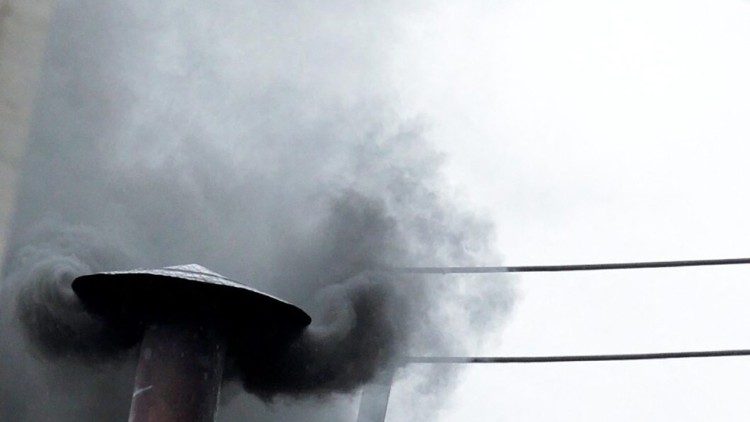
All eyes are on the Sistine Chapel’s chimney, where plumes of smoke will soon reveal whether the Catholic Church has found its next leader.
The conclave resumed on Thursday, May 8, 2025, as 133 cardinal-electors continued casting ballots to choose a successor to Pope Francis, who died last month at the age of 88.
The first day of the secretive election process ended Wednesday night with black smoke billowing from the chapel’s chimney at 9:00 p.m., signalling no clear winner had emerged from the initial vote.
Tens of thousands of faithful gathered in St. Peter’s Square, watching intently as history unfolded behind the chapel’s locked doors.
The cardinals, sworn to secrecy and cut off from the outside world, are expected to vote up to four times a day—twice in the morning and twice in the afternoon—until one candidate receives the required two-thirds majority, or at least 89 votes, to be declared the 267th pope.
The new pope will need the backing of at least 89 cardinals to be elected.
White smoke from the chimney, accompanied by the ringing of St. Peter’s Basilica’s bells, will signal that a new pope has been chosen. If no candidate is selected, black smoke will continue to rise.
The first signal from the Sistine Chapel was expected around 7:00 p.m. on Wednesday, but the black smoke did not appear until two hours later.
After spending the night sequestered at the Vatican’s Santa Marta guesthouse, the cardinals had an early breakfast and held a Mass before taking their oath.
They then returned to the Sistine Chapel for the second day of the secret ballot.
During the election process, smoke signals traditionally occur around midday and early evening, typically around 7:00 p.m.
On Thursday, the first smoke signal is expected around noon, unless a pope is elected in the first round of voting, in which case white smoke could appear around 10:30 a.m.
If there is no consensus in the morning, the next signal is expected at 7:00 p.m., unless a new pope is chosen in the first afternoon vote, in which case the white smoke would appear around 5:30 p.m.
The cardinals will remain locked away in the Vatican, sworn to secrecy and without access to the outside world, until a new leader is elected to lead the world’s 1.4 billion Catholics.
The previous two conclaves—in 2005 and 2013—resulted in the elections of Benedict XVI and Francis, respectively, and each lasted two days.
Some papal elections in the 20th century took up to five days, while the longest conclave in history, in the 13th century, lasted two years and nine months.










